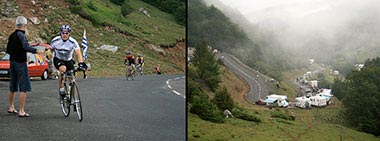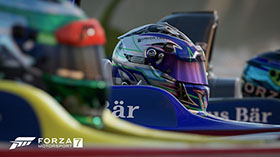
Training
The Reason
A student at Kent State University, I was fortunate to have both a great boss and student adviser named Donna Carlton. Donna understood what other faculty didn’t: that we were a bunch of barely-adults who for the most part didn’t know what the hell we were doing but were doing our best at it.
She gave us freedom and support far beyond the definition of her role, and we were all the better for it.
In 2002, Donna lost her 15-year-old son Dylan to complications from a congenital heart defect. Many of us hoped to memorialize Dylan where Donna had given so much. Delta Upsilon, the KSU fraternity she advised for many years, established the Delta Upsilon Dylan Fitzgerald Carlton Endowed Scholarship Fund in 2006.
An endowment fund is not a scholarship, though. To become viable, the fund would need to cross a $25,000 threshold. To get things rolling, I donated $10,000 but was bothered that it wasn't enough.

Stage 14
The Challenge
The Tour de France Challenge was created to inspire others to help make the scholarship a reality. The fundraiser centered on one simple thing: riding Stage 14 of the 2007 Tour de France and allowing donors to challenge my performance.
Stage 14 was chosen because it was arguably the TDF's most difficult that year: a mountainous 122-miles with more than 12,000 ft of climbing. I was determined to earn the donations.
To make things interesting, I offered ‘Performance Contracts’. With a Performance Contract, the donor set a goal for me (finish the stage, lose a certain amount of weight, etc). If I succeeded, the donor had to double their donation.
And I added a twist: if I failed to meet a donor's challenge, I had to donate the additional funds. That guaranteed the endowment would get the maximum possible donation.

Success
The Result
I trained for 6 months in the mountains of southern California, spending up to 7 hours a day on the bike and shedding 30 lbs in the process.
When I started pedaling there was more than $3,000 in performance contract donations that would come out of my pocket if I didn’t finish.
Nearly 8 hours later, battered and exhausted after two crushing mountain climbs but with the encouraging shouts of French cycling fans ringing out around me (“Allez! Allez!”), I crested the summit of the Plateau-de-Beille.
I completed the stage and raised more than $15,000 in additional funds for the endowment, making it a fully realized scholarship.
The scholarship is awarded yearly to a Kent State University student who has demonstrated exemplary leadership and community service.



































